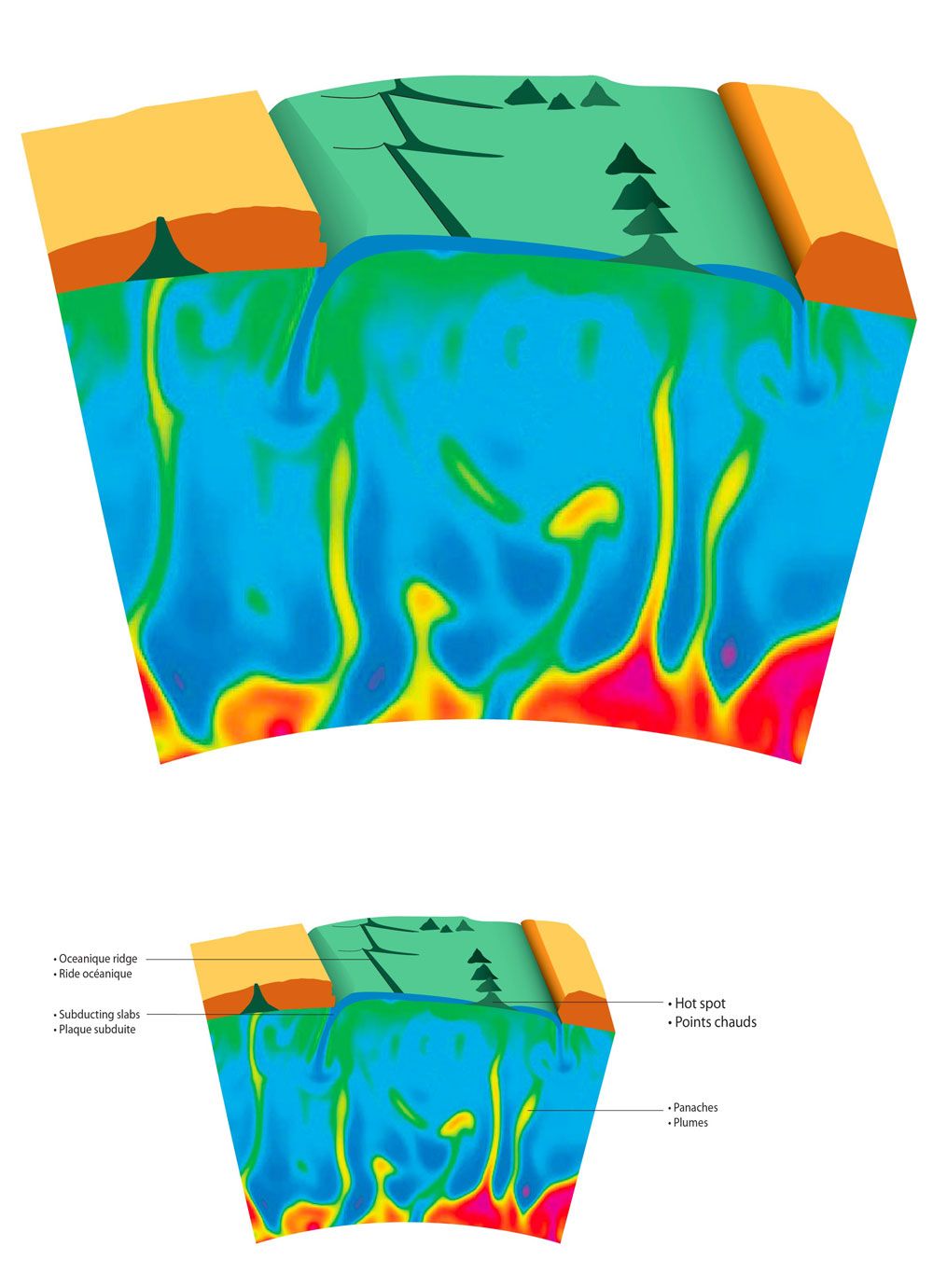
X-Rays Shed Light on Origins of Volcano Hotspots

The world's most brilliant beam of X-rays now suggests that volcanic hotspots may indeed be caused by giant plumes of hot rock streaming upward from near the Earth's core, as volcano researchers have long suspected.
Volcanoes are usually located at the boundaries of Earth's tectonic plates, where those plates push and pull at each other. There, Earth's crust is relatively weak, and magma can easily break through.
Volcanic hotspots, though, are mostly located far away from plate boundaries, and explaining how magma makes its way through thicker portions of the crust poses a conundrum.
A better understanding of hotspots and what drives them is able to not only shed light on their current effects on life, but also on the composition of the early Earth, said researcher Denis Andrault, a mineral physicist at Blaise Pascal University in Clermont, France. [50 Amazing Facts About Earth]
Mantle plumes
One explanation for how these hotspots form suggests that narrow streams of hot rock with large, mushroomlike heads known as mantle plumes push up from deep within the Earth. The deepest are thought to rise from near the Earth's core and up through more than 1,800 miles (2,900 kilometers) of the Earth's mantle layer, pumping gigantic amounts of heat upward.
For instance, some geologists have argued that the Hawaiian island chain originated from a mysterious cluster of heat far beneath the Pacific Ocean. As the Pacific plate drifted over this mantle plume, volcanoes arose on the ocean floor that eventually grew to become islands rising above the ocean surface.
Sign up for the Live Science daily newsletter now
Get the world’s most fascinating discoveries delivered straight to your inbox.
However, whether these mantle plumes exist remains hotly debated.
"We know less about the Earth's deep mantle than about the surface of Mars," Andrault told OurAmazingPlanet.
Lasers and X-rays
To see whether mantle plumes might actually be the cause of volcanic hotspots, scientists used lab experiments to recreate the extreme conditions at the core-mantle boundary to see what material from that region could rise through hundreds of miles of rock.
"It is impossible to drill a hole of even 20 kilometers [12 miles] into the Earth, so we have to recreate it in the laboratory," Andrault said.
The investigators started with tiny bits of rock up to 10 times thinner than a human hair. They compressed these specks of dust between the tips of two cone-shaped diamonds under extraordinary pressures of up to 120 gigapascals, more than 1,000 times the pressure found at the bottom of the Mariana Trench, the deepest point in the ocean. A laser beam then heated these samples to temperatures between 5,400 and 7,200 degrees Fahrenheit (3,000 and 4,000 degrees Celsius).
"Those extreme conditions of pressure and temperature is like traveling into the very deep Earth," Andrault said.
The researchers next used the most brilliant beams of X-rays in the world at the European Synchrotron Radiation Facility in Grenoble, France, focused to spots just a micron wide — a hundredth the diameter of a human hair — to scan these samples. The X-ray analysis revealed the iron content of the molten and solid parts of these specks.
"It is the iron content which is decisive for the density of molten rock at the core-mantle boundary," Andrault said. "Its accurate knowledge allowed us to determine that molten rock under these conditions is actually lighter than solid."
Their findings, detailed in the July 19 issue of the journal Nature, suggest that partially molten rock at the core-mantle boundary should be buoyant and thus rise toward Earth's surface, evidence supporting the idea of deep mantle plumes.
This article was provided by OurAmazingPlanet, a sister site to LiveScience.












